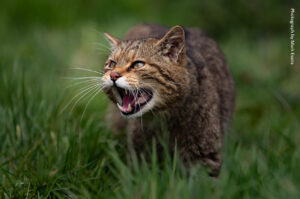One quarter of native mammals now at risk of extinction in Britain
The first official Red List for British Mammals highlights species most at risk of national extinction in the near future, with researchers calling for urgent action to prevent their loss.

The first official Red List for British Mammals, produced by the Mammal Society for Natural England, Natural Resources Wales, Scottish Natural Heritage (NatureScot) and the Joint Nature Conservation Committee, shows that 11 of the 47 mammals native to Britain are classified as being at imminent risk of extinction. A further 5 species are classified as “near threatened” — meaning that there is a realistic possibility of them becoming threatened with extinction in the near future, and 4 are “data deficient” — meaning that their conservation status is unknown owing to a lack of information.
Crucially, the Red List for Great Britain has received authorisation on behalf of the International Union for the Conservation of Nature (IUCN) at a regional level. This is significant as it means that the threatened British species have been identified using the same robust, internationally-agreed, system that is applied to classify threats to species such as elephants and tigers.
Fiona Mathews, Mammal Society Chair and Professor at the University of Sussex, led the report. She says: “The new Red List provides a very clear basis for prioritising funding and conservation efforts for the future. Twenty species — those classed as Threatened, Near Threatened, and Data Deficient — all need urgent attention. While we bemoan the demise of wildlife in other parts of the world, here in Britain we are managing to send even rodents towards extinction. Things have to change rapidly if we want our children and grandchildren to enjoy the wildlife we take for granted.”
Among those species listed as being at risk of extinction in Britain are the water vole, hedgehog, hazel dormouse, wildcat and the Grey long-eared bat. The European wolf is already extinct.
The reasons for the declines vary between species. For some, such as the wildcat, pine marten, and beaver (which is doing well in the scattered locations where it has been reintroduced), there has been extensive historical persecution. For bats and the hazel dormouse, habitat loss is the main threat; while the water vole, red squirrel and Orkney vole suffer from the combined effects of habitat degradation and the introduction of non-native species.
Natural England Chair Tony Juniper said “This is a wake-up call, but it is not too late to act. We are working with our partners to recover our threatened and widely loved mammals, including licensing the reintroduction of beavers into England, and supporting the recovery of dormice and the grey long-eared bat, but there is so much more to do.
Central to the recovery of these and other creatures will be the protection and restoration of large areas of suitable habitat, including through the creation of a vibrant and wildlife-rich Nature Recovery Network, enabling populations of rare animals to increase and be reconnected with one another.”
Reintroductions can offer hope for some species. For example, local reintroductions of beavers have been successful, with the animals readily breeding in the wild; and translocations of pine martens from Scotland — where over 98% of the British population is found — have boosted populations in Wales. Nevertheless, the animals will only cease to be classed as threatened once their populations are much larger and better connected.
Unfortunately, for most other species, reintroductions are not a solution because the causes of their declines have not been rectified. Instead, fundamental change is needed in the way we manage our landscapes and plan future developments, so that we provide the space and habitat needed for our wildlife to thrive.
Members of the public can get involved with keeping an eye on Britain’s mammals using the Mammal Society’s free Mammal Mapper app.
Ends
[registration_form]
This should really be headed ‘Red List for British Terrestrial Mammals’ as cetaceans and seals don’t even get a mention. A bit dispiriting for those of us involved in marine mammal conservation.
Steve – yes, I wondered whether that was because they weren’t considered or they didn’t qualify. Surely quite a few qualify.
You’re quite right, Mark. Sei, Blue, Fin, Sperm, Bowhead and North Atlantic Right whales have all been recorded in British waters and all are IUCN Red-Listed. Added to that, most of the beaked whales and many dolphin species are data-deficient, so they qualify but it seems that they weren’t considered. A real pity.
Yes you are right. I’m hoping we can add the seals soon. Separate exercise for cetaceans is hopefully not too far away!
Fiona – thank you for your first comment here.
Thank you, Fiona. Can you tell us any more?